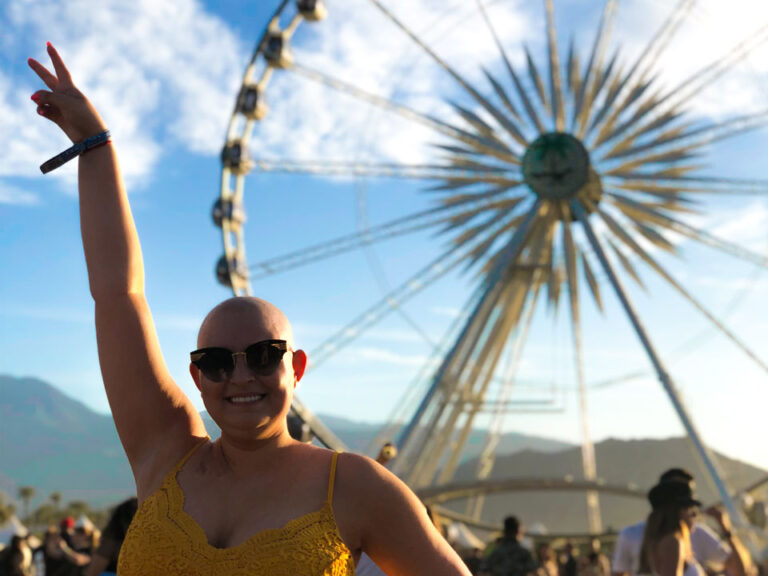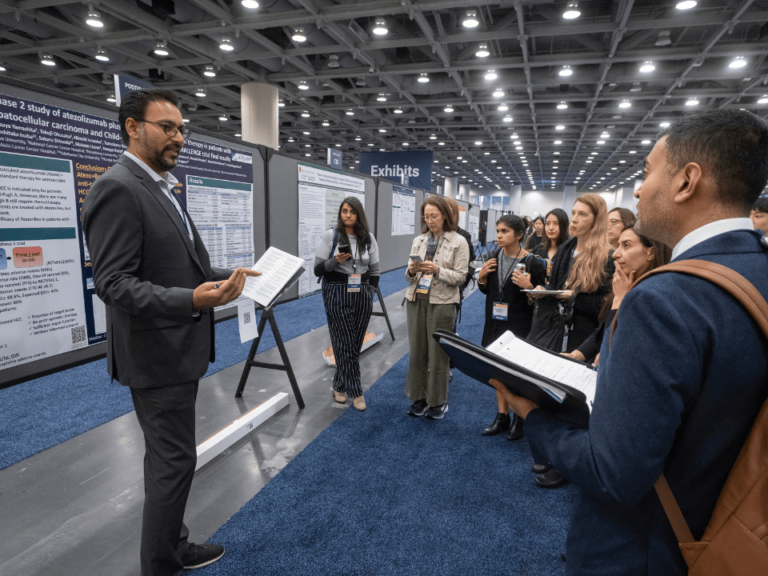On the eve of the Thanksgiving holiday, FDA delivered a flurry of decisions: approvals for two therapies—venetoclax and glasdegib—to treat a deadly form of blood cancer called acute myeloid leukemia (AML), and a priority review designation for another therapy—quizartinib—to treat the same disease. A fourth therapy to treat AML—gilteritinib—received an FDA approval on Nov. 28.
These moves by FDA all come on top of six therapies previously approved to treat AML since the start of 2017. What is most startling is that all of these advances come after a nearly four-decade drought in new approaches to treat AML, which strikes 21,000 people in the U.S. each year, and kills 10,000 patients.
So what has changed?
A confluence of factors years in the making has finally come to fruition.
This is a story about precision medicine—identifying the underlying molecular drivers of an individual patient’s cancer and then matching the right therapeutic agent to knock out the cancer. This can be accomplished in a number of ways: either inhibiting a mutated gene, boosting the patient’s immune system to conquer the cancerous cells, or optimizing the delivery of cytotoxic agents to the cancer cells.
And after years and millions of dollars invested in AML research with little progress to show for it, the pieces have finally started to come together. Advanced technology now allows scientists to sequence a patient’s genetic profile, at the same time that the biopharmaceutical industry has multiple agents in their investigational and development pipelines, each one designed to precisely treat a specific subtype of disease.
For the past 40 years, patients diagnosed with AML had few options but to undergo a grueling protocol—a one-size-fits-all combination of two chemotherapies that for the fortunate few might drive the cancer into remission, or bridge them to a stem cell transplant. But for most, the reprieve is brief, followed by relapse and an even more difficult to treat version of the disease. For older patients who make up the vast majority of AML diagnoses, the combination is simply too toxic for them to tolerate.
We now understand that AML is really a constellation of multiple subtypes of disease. And we’re finally building the arsenal to take on each type of disease with an approach more likely to work for the individual.
But while the recent progress makes us more hopeful than ever, we’re not there yet. Consider one of the newest approvals—venetoclax, a therapy that works by inducing cell death, the natural process that enables the body to rid itself of bad cells.
When the process stops working, cancer cells proliferate. Venetoclax inhibits the BCL-2 protein that keeps cells alive by blocking cell death, also known as apoptosis. Venetoclax looks to be a potential game-changer for many patients, not only for AML, but in other blood cancers such as chronic lymphocytic leukemia and potentially other cancers.
The data look very good so far—in one of the studies leading to its approval, 54 percent of the patients treated with venetoclax combined with decitabine were still in complete remission after more than four months.
A good result, relatively speaking, for a disease where fewer than 20 percent of elderly patients survive five years after their diagnosis. And yet, what of the other 46 percent of patients in the trial who didn’t respond? And how long-lasting are these remissions for those who do? The BCL-2 protein is not universally overexpressed in AML, so more understanding of which patients will respond and which won’t is critical. We can’t stop until we achieve 100 percent response rates and ensure that those responses are long-lasting, thus changing survival rates.
It is imperative that we continue to increase our understanding of the biomarkers and conditions that allow one patient to respond while another patient proves refractory to treatment. We are finally moving the needle in AML but until every patient diagnosed has their biomarker profile analyzed, including appropriate sequencing and cytogenics, and an agent is developed for every scenario, we will still lose loved ones to this disease.
This is why The Leukemia & Lymphoma Society launched a precision medicine trial in AML more than two years ago. Convening a collaboration of scientists, cancer centers, pharmaceutical companies, technology companies and the FDA, we designed an umbrella protocol—the Beat AML Master Clinical Trial—now testing seven drugs simultaneously in 11 different study arms at 13 cancer centers across the country. More than 400 patients have been screened to date, and we are turning around the genomic analysis of the patient within seven days and giving them a treatment we hope will offer a better outcome for them. The first data from the trial will be presented this week at the 60th Annual ASH Meeting in San Diego.
The drug approvals last week, and over the past two years, show that we are headed in the right direction with a precision medicine approach to conquering this difficult cancer.
Looking ahead, we expect this dizzying rate of progress to continue for AML patients. We still have a long way to go before we start seeing improved survival rates for these patients, but after four decades and millions of dollars invested, we are finally seeing results that give us real reason for optimism.
2017-2018 Acute Myeloid Leukemia FDA Approvals | ||||
Drug name | Company | Approval date | Indication | New agent or new indication |
1. midostaurin (Rydapt) | Novartis | 4.28.17 | r/r/ AML (FLT3) | New agent |
2. enasidenib (Idhifa) | Celgene | 8.1.17 | r/r/ AML (IDH2) | New agent |
3. CPX-351 (Vyxeos) | Celator/Jazz | 8.3.17 | High-risk secondary AML | New formulation |
4. gemtuzumab ozogamicin (Mylotarg) | Pfizer/Wyeth | 9.1.17 | CD33 positive AML | Return to market |
5. arsenic trioxide (Trisenox) | Teva | 1.15.18 | First line APL | New indication |
6. ivosidenib (Tibsovo) | Agios | 7.20.18 | IDH1 | New agent |
7. venetoclax (Venclexta) | Abbvie/Genentech | 11.21.18 | Newly diagnosed AML over age 75 or ineligible for Standard chemo | New indication |
8. glasdegib (Daurismo) | Pfizer | 11.21.18 | Newly diagnosed AML over age 75 | New agent |
9. gilteritinib (Xospata) | Astellas | 11.27, 28, or 29. 18 | r/r AML FLT3 | New agent |
*quizartinib—pending decision | Daiichi Sankyo | PDUFA: 5.25.19/priority review granted 11.21.18 | FLT3 r/r/ AML | New agent |












